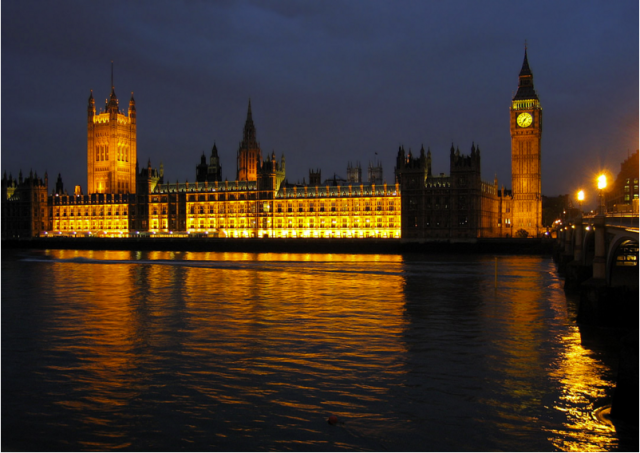There is nothing that capitalists won’t grab if they see a possibility to score a profit. Not even the most basic needs for human life, such as water, are exempt.
A favorite tactic for grabbing what had once been in the public domain and converting it into private profit is the “public-private partnership.” A tactic sadly abetted by the world’s governments, as the name implies.
Public-private partnerships (PPPs), a decades-long string of disasters for the public but often a bonanza for the private, have left behind a long trail of one-sided results in water systems, electricity distribution, sewers, highways, hospitals and other infrastructure. The latest report testifying to the damage wrought by PPPs comes to us courtesy of the European Federation of Public Service Unions (EPSU), a federation of 8 million public service workers from over 250 trade unions across Europe, and the European Network on Debt and Development (Eurodad), a network of 49 civil society organizations from 20 European countries “working for transformative yet specific changes to global and European policies, institutions, rules and structures.”

The EPSU/Eurodad report, “Why public-private partnerships (PPPs) are still not delivering,” paints a damning picture. The report declares:
“PPP advocates claim they bring financing, efficiency and innovation. But real-life experience reveals a different picture. The following points outline eight reasons why PPPs are not working: 1. PPPs do not bring new money – they create hidden debt 2. Private finance costs more than government borrowing 3. Public authorities still bear the ultimate risk of project failure 4. PPPs don’t guarantee better value for money 5. Efficiency gains and design innovation can result in corner-cutting 6. PPPs do not guarantee projects being on time or on budget 7. PPP deals are opaque and can contribute to corruption 8. PPPs distort public policy priorities and force publicly run services to cut costs.”
The EPSU/Eurodad report defines PPPs as “long-term contractual arrangements where the private sector provides infrastructure assets and services that have traditionally been directly funded by government, such as hospitals, schools, prisons, roads, bridges, tunnels, railways, and water and sanitation plants, and where there is also some form of risk sharing between the public and the private sector.” There may be risk sharing on paper, but in reality even this definition is a little too generous toward PPPs — in almost all cases, contractual clauses put the risk squarely on the public, and when the private company that has taken over a previously public good proves unable to manage or goes out of business, it is the public that pays.
The paper drew on examples across Europe, with some of the worst examples coming in Britain. Privatizing public services leads to higher costs, reductions in the quality of service and lengthier periods in completing construction. All of these results, of course, are directly opposite of what incessant capitalist propaganda continually blares. Although the EPSU/Eurodad report didn’t speculate as to why these results occur, it takes little imagination to see the reasons: Corporations exist to make the biggest profit regardless of social cost while governments need only provide a reliable service without having to generate seven- and eight-figure salaries for executives and windfalls for stockholders and other speculators.
It’s not profits above all else, it’s nothing but profits
Consider the words of Milton Friedman, godfather of the Chicago School of economics whose words are widely followed in corporate boardrooms and in financial publications. He put it plainly in an interview with author Joel Bakan in the context of a former BP chief executive officer suggesting (however disingenuously) the company would make environmental concerns more important:
“Not surprisingly, Milton Friedman said ‘no’ when I asked him how far John Browne could go with his green convictions. … ‘He can do it with his own money. If he pursues those environmental interests in such a way as to run the corporation less effectively for its stockholders, then I think he’s being immoral. He’s an employee of the stockholders, however elevated his position may appear to be. As such, he has a very strong moral responsibility to them.’ ”
That is the standard of the corporate world: Profits for speculators, period. No other considerations, no matter how flowery their public relations concoctions may be. There are no exceptions because a service or product is necessary for human life.
To return to the EPSU/Eurodad report, a much higher cost of financing was one cause of higher costs for the public to access previously public goods. Noting the hidden debt in these deals, the paper said, “In a PPP, instead of the public authority taking a loan to pay for a project, the private sector arranges the financing and builds the infrastructure, then the public sector pays a set fee over the lifetime of the PPP contract. In some cases, users also pay part or all of the fee directly to the private sector company (e.g. toll roads).” The United Kingdom National Audit Office “found that the effective interest rate of all private finance deals (7%-8%) was double that of all government borrowing (3%-4%).”

An even larger differential was found in France: “A particularly vivid example was the Paris Courthouse PPP, signed in 2012, which featured an investment of €725.5 million and no less than €642.8 million in financing costs. The French Court of Auditors found that the interest rate for borrowing for the PPP was 6.4 per cent, while in 2012 the weighted average rate for government bond financing in the medium-long term was 1.86 per cent,” the report said, adding that operating costs were also higher.
Another example is a Stockholm hospital that cost €2.4 billion instead of the projected €1.4 billion. The hospital was not only completed four years later than scheduled, but a “design competition” resulted in “operating theatres not being adapted for operations; the risk of medicines being destroyed because of medicine rooms being too warm; and physicians having to carry administrative material in backpacks because of the lack of space for administrative tasks.” One conclusion from this poor result is that “the high level of complexity, together with the private partner’s interest in cost-cutting as much as possible, can easily result in undesirable corner-cutting.”
The report concludes that “What decades of experience has shown is that PPPs come at a high cost and are not delivering the expected benefits.”
If you can sell it, they will buy it
PPPs are particularly common in Britain, an unfortunate development that is not the cause of any one party. Britain’s version of public-private partnerships are called “private finance initiatives.” A scheme concocted by the Conservative Party and enthusiastically adopted by the New Labour of Tony Blair and Gordon Brown, the results are disastrous. A 2015 report in The Independent revealed that the British government owed more than £222 billion to banks and businesses as a result of private finance initiatives. Jonathan Owen reported:
“The startling figure – described by experts as a ‘financial disaster’ – has been calculated as part of an Independent on Sunday analysis of Treasury data on more than 720 PFIs. The analysis has been verified by the National Audit Office. The headline debt is based on ‘unitary charges’ which start this month and will continue for 35 years. They include fees for services rendered, such as maintenance and cleaning, as well as the repayment of loans underwritten by banks and investment companies. Responding to the findings, [British Trades Union Congress] General Secretary Frances O’Grady said: ‘Crippling PFI debts are exacerbating the funding crisis across our public services, most obviously in our National Health Service.’ ”
The Independent article reported that private firms can even flip their contracts for a faster payday. Four companies given 25-year contracts to build and maintain schools doubled their money by selling their shares in the schemes less than five years into the deals for a composite profit of £300 million. Clearly, these contracts were given at well below reasonable cost. Nor is health care exempt: A 2019 report by the Progressive Policy Think Tank found that there are English hospitals forced to divert one-sixth of their income to paying back private finance initiatives, with National Health Service trusts paying more than £2 billion on such repayments per year, “taking money away from vital patient services.” For just £13 billion of private investment, the NHS must pay back £80 billion! Quite a windfall for banks.
Naturally, such financial legerdemain is not limited to any particular country. Here is just a small sampling of outcomes:
- During the course of a 25-year contract with Suez and Veolia, water rates in the city of Paris doubled after accounting for inflation. Thanks to a secret clause, the two companies received automatic price rises every three months. When the contract finished, Paris re-municipalized its water system. Despite the short-term expenses of doing so, the city saved about €35 million in the first year and was able to reduce rates by eight percent.
- A privatization of the Buenos Aires water and sewer systems resulted in chronic failures to meet contractual obligations, repeated demands that the contract be renegotiated (granted by the neoliberal governments of the 1990s), failure to meet water-safety standards, worsening pollution of underground water sources, and price increases over the first decade of the contract 12 times that of inflation. The Argentine government then had to spend years raising legal challenges to take back the system even though the private company was in obvious default of its contractual obligations.
- The German city of Bergkamen (population about 50,000) reversed its privatization of energy, water and other services. As a result of returning those to the public sector, the city began earning €3 million a year from the municipal companies set up to provide services, while reducing costs by as much as 30 percent.
- A report by Food & Water Watch found that investor-owned utilities in the United States typically charge 59 percent more for water and 63 percent more for sewer service than local-government utilities. After privatization, water rates increase at about three times the rate of inflation, nearly tripling on average after 11 years of private control. Corporate profits, dividends and income taxes can add 20 to 30 percent to operation and maintenance costs.
- A study by University of Toronto researchers of 28 Ontario public-private partnerships found they cost an average of 16 percent more than conventional contracts. Elsewhere in Canada, the Sea-to-Sky Highway in British Columbia will cost taxpayers C$220 million more than if it had been financed and operated publicly, and the cost of a project at the Université de Québec à Montréal was doubled to C$400 million.
Water as a commodity rather than a human right
That even water is a commodity is no surprise when corporate leaders consider it just another product that should have a price, most notoriously enunciated in 2014 when the chairman of Nestlé S.A., Peter Brabeck-Letmathe, issued a video in which he denounced as “extreme” the very idea of water being considered a human right. And not only water — various schemes exist to destroy the U.S. Postal Service in the interest of corporate profit.
There are even corporate executives who want to privatize the weather. No, that’s not in the realm of science fiction. The head of a private weather forecaster, AccuWeather, has repeatedly lobbied to prohibit the U.S. government’s National Weather Service from issuing forecasts! Under this scenario, the Weather Service would hand all of its data to private companies, who would then issue forecasts, while of course letting taxpayers foot the bill for the data. One of the U.S. Senate’s dimmest bulbs, fundamentalist Rick Santorum (thankfully no longer in office), once promoted a bill to do just that. And, incidentally, the National Weather Service issues forecasts more reliable than those of AccuWeather.

Public-private partnerships are one of the surest ways of shoveling money into the gaping maws of corporate wallets. The result has been disastrous — public services and infrastructure maintenance is consistently more expensive after privatization. Cuts to wages for workers who remain on the job and increased use of low-wage subcontractors are additional features of these privatizations. Less services and fewer employees means more profit for the contractor, and because the contractor is a private enterprise there’s no longer public accountability.
The rationale for these partnerships is, similar to other neoliberal prescriptions, ideological — the private sector is supposedly always more efficient than government. A private company’s profit incentive will supposedly see to it that costs are kept under control, thereby saving money for taxpayers and transferring risk to the contractor. In the real world, however, this works much differently. A government signs a long-term contract with a private enterprise to build and/or maintain infrastructure, under which the costs are borne by the contractor but the revenue goes to the contractor as well.
Public-private partnerships are nothing more than a variation on straightforward schemes to sell off public assets below cost, with working people having to pay more for reduced quality of service. Capitalism in action.










